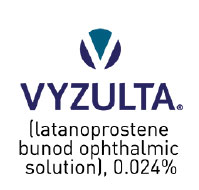LEARN FROM AN EXPERT:
Discover a novel treatment option to help manage IOP in your open-angle glaucoma patients.
DATE:
Thursday, October 1, 2020
7:30 PM - 8:30 PM
SPEAKER:

MURRAY FINGERET, OD, FAAO
Chief of the Optometry Section,
Brooklyn/St. Albans Campus,
Department of Veterans Administration
New York Harbor Health Care System
Clinical Professor,
SUNY, College of Optometry
This program is sponsored by Bausch + Lomb.This program is intended for practicing, US-based physicians who have an NPI number/state medical license. No CME/CE will be provided for this program. Only physicians and health care professionals involved in providing patient care or product recommendations may attend this educational program. Attendance by guests or spouses is not permitted.
INDICATION
VYZULTA® (latanoprostene bunod ophthalmic solution), 0.024% is indicated for the reduction of intraocular pressure (IOP) in patients with open-angle glaucoma or ocular hypertension.
IMPORTANT SAFETY INFORMATION
-
Increased pigmentation of the iris and periorbital tissue (eyelid) can occur. Iris pigmentation is likely to be permanent
-
Gradual changes to eyelashes, including increased length, increased thickness, and number of eyelashes, may occur. These changes are usually reversible upon treatment discontinuation
-
Use with caution in patients with a history of intraocular inflammation (iritis/uveitis). VYZULTA should generally not be used in patients with active intraocular inflammation
-
Macular edema, including cystoid macular edema, has been reported during treatment with prostaglandin analogs. Use with caution in aphakic patients, in pseudophakic patients with a torn posterior lens capsule, or in patients with known risk factors for macular edema
-
There have been reports of bacterial keratitis associated with the use of multiple-dose containers of topical ophthalmic products that were inadvertently contaminated by patients
-
Contact lenses should be removed prior to the administration of VYZULTA and may be reinserted 15 minutes after administration
-
Most common ocular adverse reactions with incidence ≥2% are conjunctival hyperemia (6%), eye irritation (4%), eye pain (3%), and instillation site pain (2%)
Please see full Prescribing Information.

